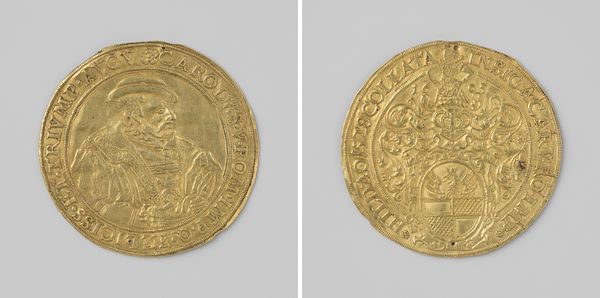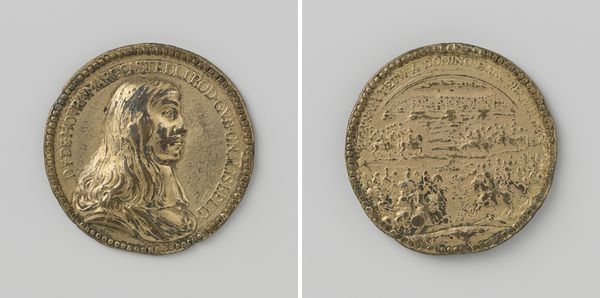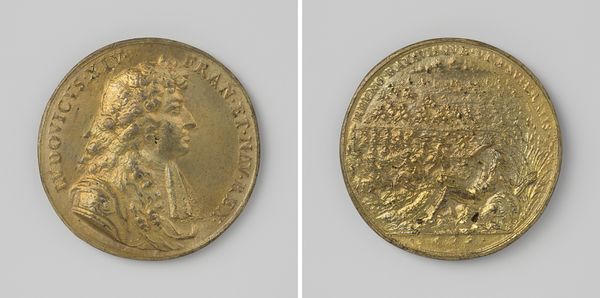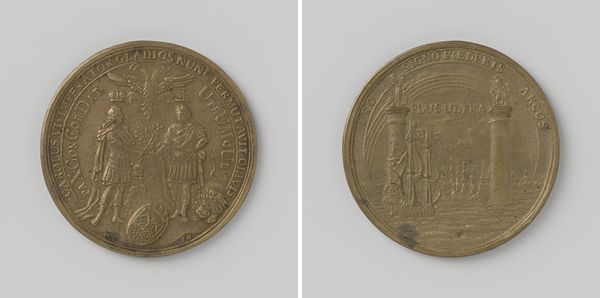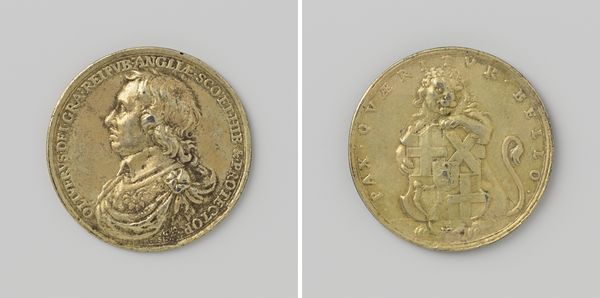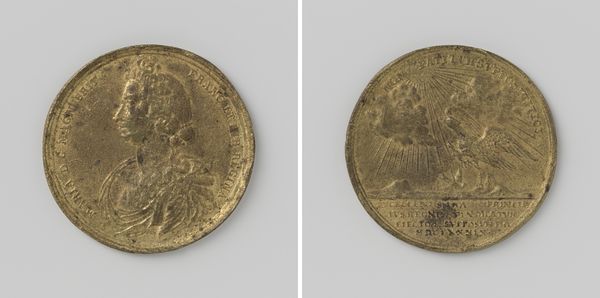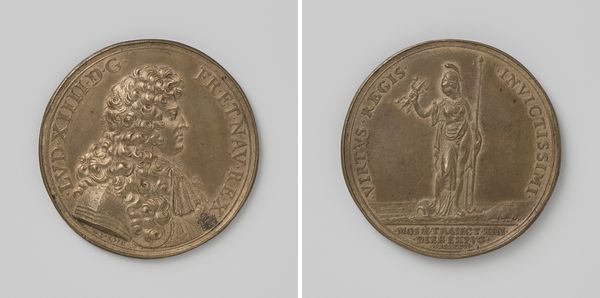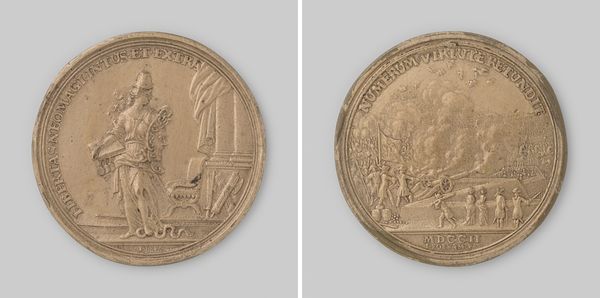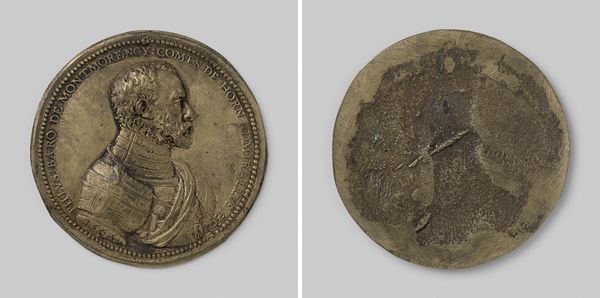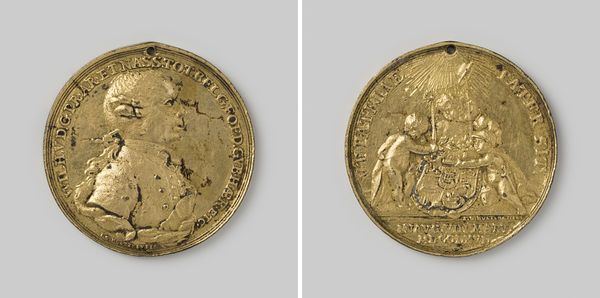
metal, relief
#
portrait
#
metal
#
relief
#
11_renaissance
#
history-painting
#
italian-renaissance
Dimensions: diameter 4 cm, weight 23.72 gr
Copyright: Rijks Museum: Open Domain
This gilded bronze medal, dating from around 1551, commemorates Charles V, Holy Roman Emperor, and his son Philip, later Philip II of Spain. Medals such as these were not simply adornments; they were powerful tools of political communication. Made in the Netherlands, then part of the Habsburg empire, this medal presents us with a visual language carefully constructed to reinforce dynastic power. The conjoined portraits of father and son emphasize continuity and legitimate succession. The reverse depicts the Pillars of Hercules, a symbol of Spain's imperial reach, entwined with a scroll carrying the motto "Plus Ultra" – "Further Beyond" – a bold statement of ambition. What makes this object particularly interesting is its function within a courtly culture steeped in ceremony and display. Medals were given as gifts, worn as badges of loyalty, and collected as symbols of prestige. Understanding the social life of such objects requires us to delve into archival sources, inventories, and contemporary accounts to reveal the complex interplay between art, power, and patronage in the 16th century.
Comments
No comments
Be the first to comment and join the conversation on the ultimate creative platform.
